Affiliate Disclaimer
Some links in this article are affiliate links. We may earn a small commission if you make a purchase through these links, at no extra cost to you. We only recommend products we find useful to our readersWe often prioritize our health and skin care, but our teeth don’t always get the attention they deserve. Teeth aren’t just tools for chewing—they significantly impact our appearance and confidence. Yet, they often end up being one of the most neglected parts of our body.
Ever wonder how a perfect set of teeth can boost your confidence? The answer lies in your smile. A bright, healthy smile can light up your face and make you feel more self-assured.
This brings to mind one of the main concerns: those white spots on teeth. You would have seen them in a person talking with you at some point. These white stains are nothing cosmetic and can mar your confidence in social encounters.
What Causes White Spots on Teeth?
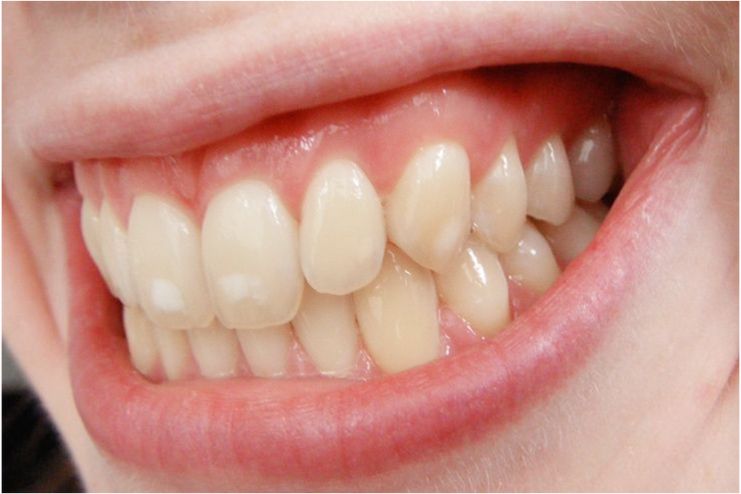
The list is exhaustive when understanding the causes of the white spots on your teeth. Though excess fluoride is one of the primary causes, there are a few other reasons for the white spots that we must consider:
1. Improper Diet:
Your diet affects your overall health, including your teeth. Foods with high acidity, for example, can lead to white patches on your teeth. Here’s why:
- Excessive Acidic Foods: Consuming highly acidic foods such as lemons, oranges, and grapefruits can lead to enamel erosion.
- Enamel Erosion: The enamel becomes prone to damage as acidity softens it. This leads to white spots on the teeth. As the enamel goes off, white spots appear.
- Continuous Exposure: The more frequently acidic foods are consumed, the more likely gradual enamel breakdown will occur, worsening the issue in the long run.
Knowing these factors can help you make smarter dietary choices to protect your teeth.
2. Fluorosis:
As contradictory as it may sound, fluoride can make or break your teeth. Excessive fluoride can lead to white spots on your teeth. You must limit the fluoride, as it strengthens the teeth if only used wisely. If you exceed the permissible levels of fluoride, you may instead do more harm than good. This condition is called fluorosis.
Flourosis leads to hypomineralisation which refers to a condition caused by overexposure to fluoride. This overexposure affects the mineral content of bones—in this case, teeth, and leads to opaque white spots on the enamel.
This can be due to excessive consumption of fluoride-rich food or accidentally consuming toothpaste rich in fluoride. Fluorosis can often cause pitted enamel to obstruct while brushing the teeth.
3. Accumulation of Plaque:
Plaque deposition on the teeth is another reason for white marks on the teeth, and it makes us feel embarrassed. Plaque is hard to get rid of and is essentially caused by one’s lack of hygiene, in which one tends not to brush or floss regularly.
Not only that, but plaque can even form due to wearing braces for a longer time. The consistent brushing of the metal against the teeth many times ends up eroding parts of the enamel, which is what resembles the white spots.
4. Enamel Hypoplasia:
Enamel is the protective layer that helps keep the teeth strong and white. You might observe that sometimes your teeth’ enamel thins or wears down. This condition is known as enamel hypoplasia.
Enamel hypoplasia is primarily caused by a lack of mineral absorption in the teeth. Other major causes might include celiac disease, consumption of antibiotics during fever, or a fetus if the mother smokes during pregnancy.
How to Remove White Spots From Teeth?

Now that we understand the underlying causes of white spots on teeth, it is time to focus on the available treatments. Here are a few treatment options and how they work to remove them.
1. Fluoride Treatments:
Remineralization helps treat white spots on teeth, and fluoride treatments help promote remineralization of tooth enamel. The treatment helps restore tooth enamel’s natural properties and reduce the white spots caused by demineralization.
- Common Methods:
- Dentists apply high-concentration fluoride varnishes or gels directly on the teeth.
- For long-term care, prescription toothpaste or mouth rinses are also used.
- Ideal For: White spots caused by early stages of demineralization, often seen after the removal of braces or poor hygiene.
- Limitations: While fluoride strengthens enamel, it does not directly remove white spots but works to even out mineral content.
2. Microabrasion:
Microabrasion involves removing the thin outer layer of enamel with a gentle abrasive and acidic compound. This helps even out the tooth and reduces white spots.
- Method:
- Dentists use a slurry of pumice and hydrochloric acid.
- This procedure is often used with polishing for a smoother finish.
- Ideal For: Works for surface-level white spots caused by fluorosis or mild enamel irregularities.
- Advantages: The procedure is minimally invasive and offers instant results.
- Limitations: Ineffective for deep or intrinsic discoloration within the tooth structure.
3. Teeth Whitening (Bleaching):
Opting for bleaching as a lightening treatment also helps treat white spots on the teeth. These treatments lighten the tooth’s overall color, reducing the contrast between white spots and the surrounding enamel.
- Options Available:
- In-office whitening treatments use higher-concentration bleaching agents for quicker results.
- Lower-concentration gel is available in home kits with custom-fitted trays prescribed by dentists.
- Ideal For: White spots that appear due to uneven staining or mild fluorosis.
- Considerations: The white spots may visibly appear larger before they blend in. If the spots are severe, they should be paired with other treatments.
4. Resin Infiltration (Icon Treatment):
Resin infiltration is a white spot removal treatment that involves filling the porous areas of the enamel with a specialized resin. The resin hardens and blends the white spots with the surrounding enamel, making the white spots fade.
- Method:
- The tooth is prepped with an etching gel to open up pores in the enamel.
- Next, a low-viscosity resin is applied and cured with a special light.
- Ideal For: Best for early-stage white spots caused by demineralization or enamel wearouts.
- Advantages: It is a noninvasive and painless process. Compared to veneers or bonding, it also helps preserve more of the tooth’s natural structure.
- Limitations: while the treatment is effective for smaller white spots, it is not ideal for deep spots caused by enamel loss.
5. Veneers or Composite Bonding:
These dental cosmetic treatments involve covering white spots with a natural tooth color material.
- Method:
- Veneers are thin porcelain shells bonded to the teeth’ front.
- Composite Bonding: To cover the imperfections, a tooth-colored resin is applied, shaped, and hardened.
- Ideal For: Situations when treatments fail to achieve the desired results, such as severe discoloration and white spots on the teeth.
- Advantages:
- The treatment provides a uniform and flawless appearance.
- This treatment is durable and stain-resistant and uses porcelain veneers.
- Drawbacks:
- Veneers are more invasive and require the removal of some natural enamel.
- Veneer treatment is expensive as compared to other treatments.
Combination Approaches: In some cases, combining treatments (e.g., microabrasion followed by whitening) may yield the best results. Sometimes, combining treatments gives better results than using just one.
For example, microabrasion can even out the enamel and reduce white spots on teeth. If you follow it up with teeth whitening, it improves the teeth’ color. Another combination approach is pairing infiltration to seal white spots with whitening. These approaches help completely treat the white spots.
The treatments mentioned above are good ways to treat tooth spots. However, you must consult a dental professional to choose the best treatment for your needs.
Treat White Spots on Teeth – The Natural Way
If you feel that the white spots aren’t severe and want to try natural remedies, you can. Here are a few natural remedies to treat the white spots on the teeth.
1. Baking Soda:
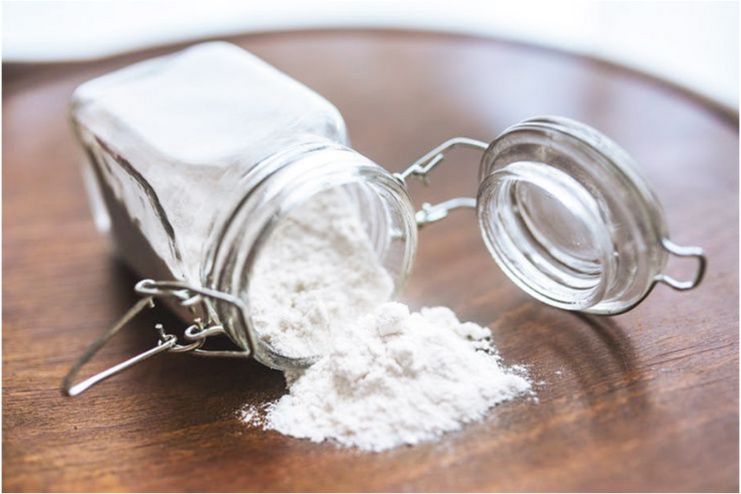
Baking Soda is a useful ingredient in maintaining oral health. It can be used to whiten teeth and make them shinier and stronger.
Here’s how to do it:
- Before brushing, sprinkle a pinch of baking soda on your toothpaste.
- Brush thoroughly and rinse.
You can also:
- Mix a small amount of baking soda with water to create a paste, apply it to your teeth, and brush gently for a minute or two before rinsing thoroughly.
- Baking soda acts as a mild abrasive, helping to remove surface stains that contribute to the appearance of white spots.
You can read more about the benefits of baking soda.
2. Green Tea Rinse:

Dentists advise their patients to avoid tea if they don’t want to stain their teeth, but not green tea. Green tea helps remove stains and is rich in vitamins and minerals. These minerals promote mineralization of the teeth, which prevents white patches on the teeth.
Here’s how to do it:
- Make a cup of green tea.
- Let the liquid cool down.
- Rinse your mouth with this liquid for 2-3 minutes.
- Rinse again with lukewarm water if you don’t like the aftertaste of green tea.
- Do this at least twice a day till the white spots disappear.
3. Hydrogen Peroxide:
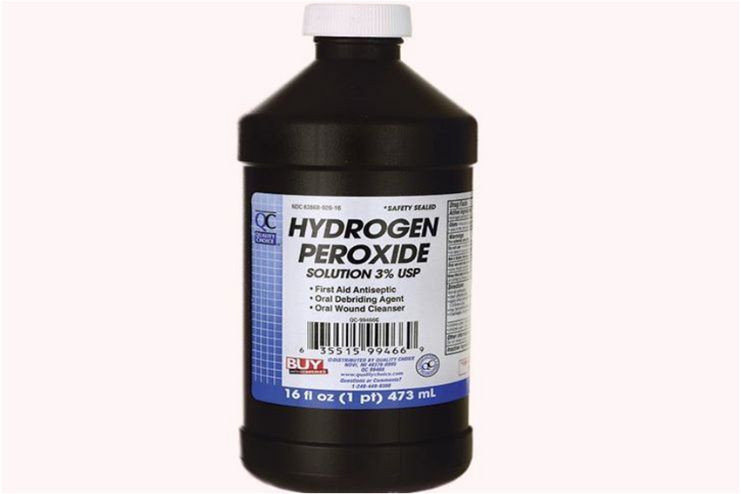
Hydrogen peroxide, if used in the correct percentage, can help in not just whitening the teeth but also in making the gums strong. It has anti-microbial properties as well which helps in treating the plaque buildup in the mouth.
Here’s how to do it:
- Mix 1 ounce of 3% hydrogen peroxide with 2 ounces of water in a cup.
- Swish the mixture in your mouth for 2–4 minutes, then spit it out.
- Gargle with water afterward.
4. Raw Carrots:

Raw carrots, being crunchy in texture, will act as a natural toothbrush to help scrape away the plaque and surface stains, which means they help reduce white spots on teeth, contributing to a whiter smile. Not just that, carrots also help maintain the pH balance of the oral cavity, which is a bonus.
5. Basil Leaves:

The variant of holy basil helps in several dental issues, and treating white spots on the teeth is one of them. It is loaded with excellent properties that help prevent bleeding gums and bad breath.
Here’s how to use basil for oral health:
- Dry out a handful of basil leaves under the sun.
- Grind into a fine powder.
- Rub the powder over the teeth once a day.
Remember to consult a dentist before relying solely on basil for treating white spots on teeth.
How to Prevent White Spots on Teeth?

While home remedies are natural and effective, they might not completely solve the underlying problem. Proper oral hygiene and a healthy lifestyle are always advisable to avoid white spots on teeth. The preventive measures for the white spots on teeth include:
1. Brush Your Teeth Twice A Day:
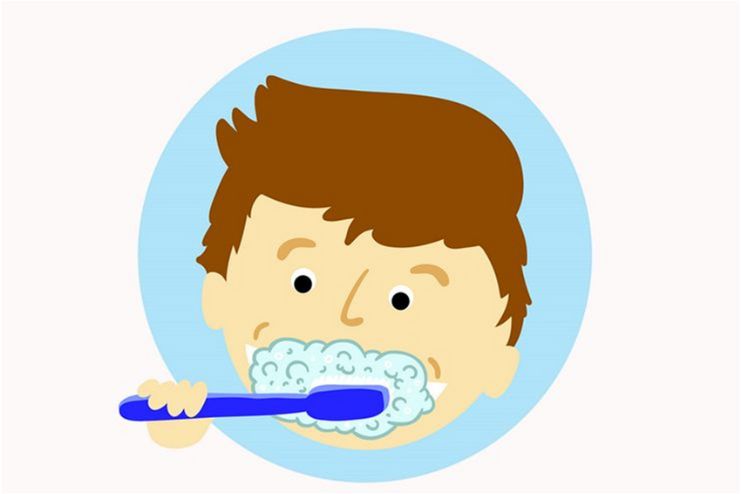
Proper oral hygiene is an important preventive way to reduce white spots. Brush your teeth twice a day to keep the oral cavity healthy and the enamel clean.
2. Avoid Bleaching Toothpaste:
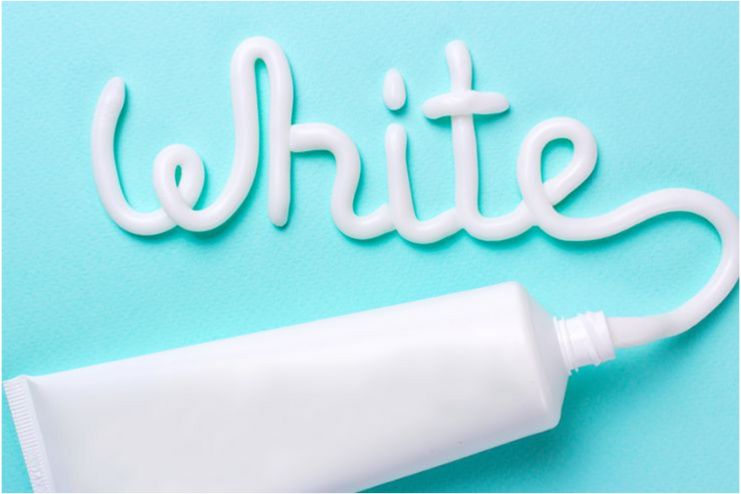
Continuous use of bleaching or whitening toothpaste erodes the protective sheath of enamel, which results in the formation of white patches on the teeth. These might tend to help with overall whitening, but the process comes with a hefty price. Avoid using whitening toothpastes.
3. Use Fluoride Mouthwash:
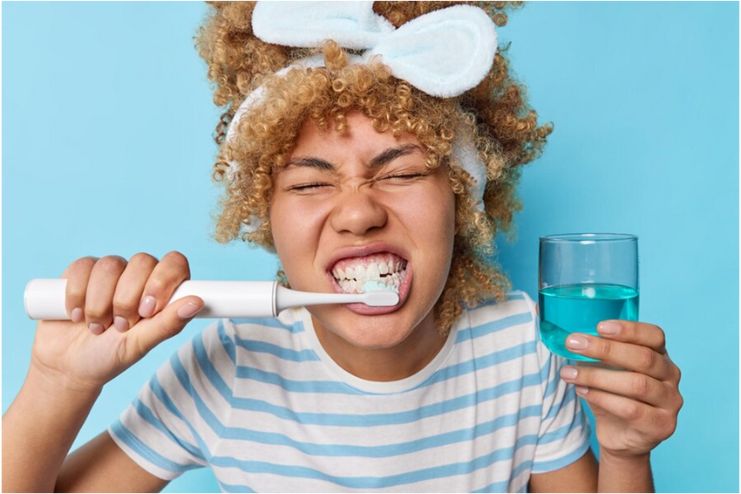
If your white spots are caused by decalcification, fluoride mouthwash can help. Fluoride mouthwash helps get rid of lingering white spots on teeth. Rinse your mouth once a day with such mouthwash, and do not overdo it, as overdoing can have adverse effects. The mouthwash also helps arrest the process of decalcification in the teeth.
4. Avoid Sugar In The Diet:
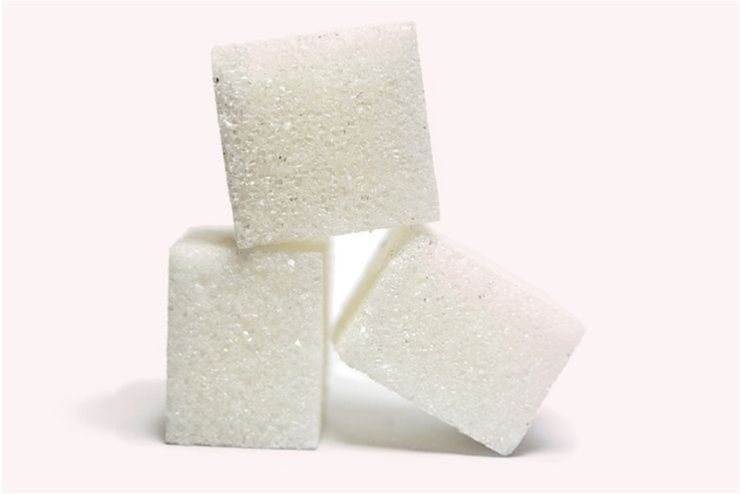
Consuming excessive sugar or sugary foods leads to tooth decalcification, which leaves behind white spots. Limit sugary foods to maintain spotless teeth.
How Long Does It Take For The White Spots On Teeth To Go Away?
Treating white spots can take time. The time varies depending upon the cause and might take anywhere between hours and years to fade.
Dehydration-related spots may disappear quickly, while enamel damage or fluorosis often requires professional treatment from the dentist.
Conclusion
White spots on teeth can indicate various underlying factors. These can include improper oral hygiene, incorrect diet, and fluoride overexposure, which can lead to enamel hypoplasia. Addressing these concerns is important to reduce white spots on teeth.
A good balanced diet and reducing acidic food intake can be a few steps towards spotless teeth. You must also seek expert dental advice from dentists and treat the causes accordingly with treatments such as microabrasion, resin infiltration, or veneers.
The key is to identify the underlying cause and consult a dental professional to tailor the right solution. Ultimately, regular oral care, expert guidance, and a proactive approach can help you bring back those pearly whites.
Follow these valuable tips, and do not let white spots hold back your smile.
-
May 2018Written by Somapika D
-
Jan 2025Edited by Vaishnavi
References
- https://timesofindia.indiatimes.com/life-style/health-fitness/health-news/5-natural-herbs-that-help-whiten-teeth/articleshow/110584317.cms
- https://www.medicalnewstoday.com/articles/322112#_noHeaderPrefixedContent
- https://www.healthline.com/health/dental-and-oral-health/white-spots-on-teeth
- https://karimanndentalstudio.com/how-to-get-rid-of-white-spots-on-teeth/
- https://my.clevelandclinic.org/health/diseases/enamel-hypoplasia
In this Article


















